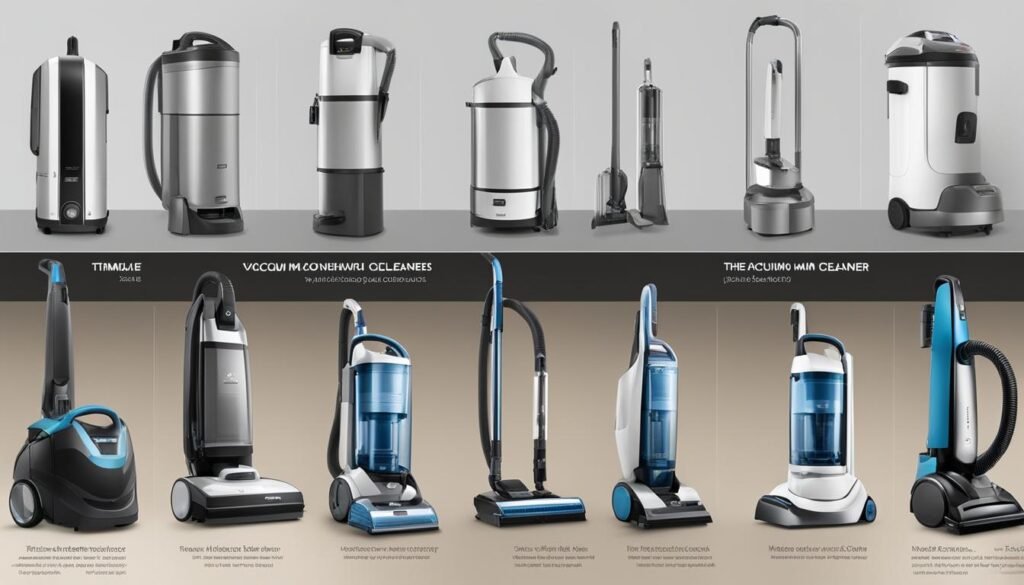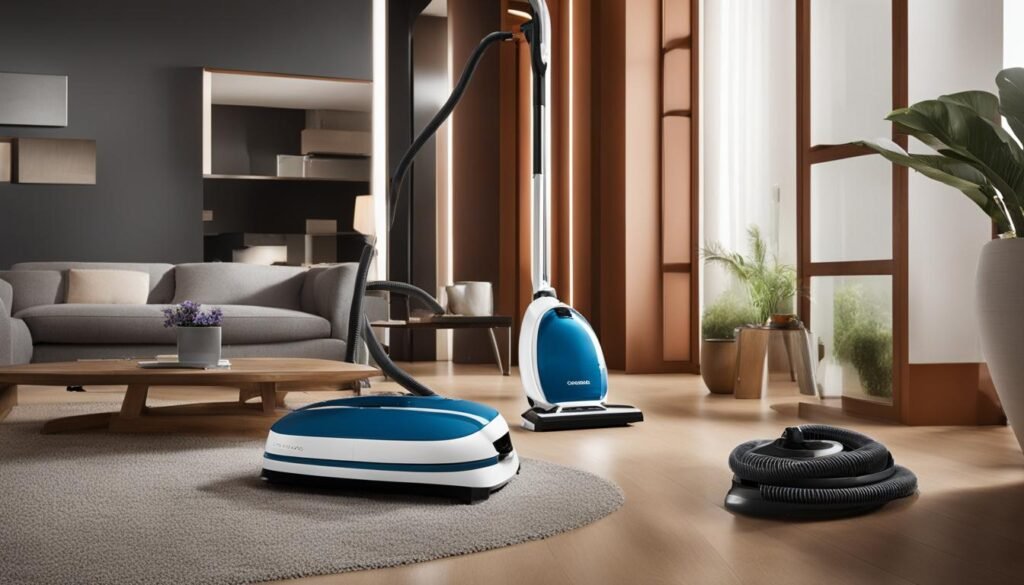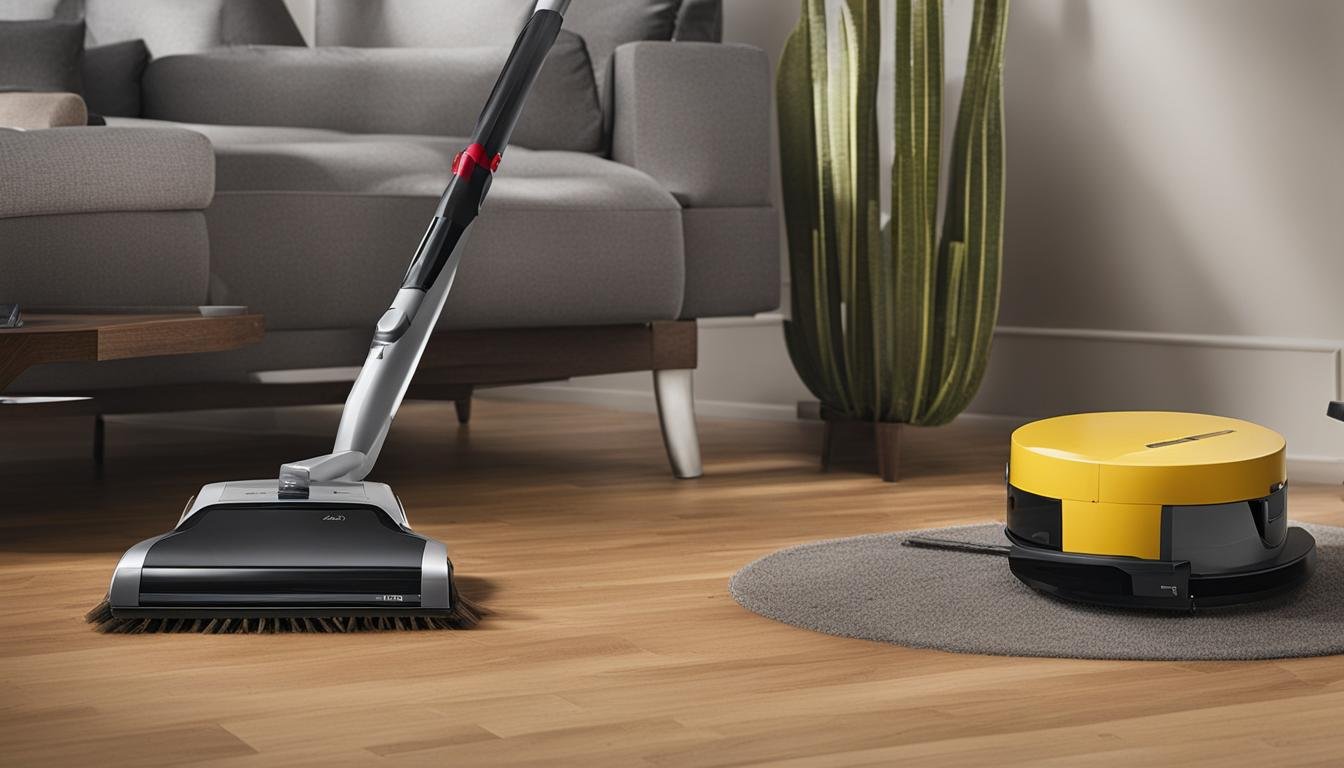Have you ever wondered why the vacuum cleaner was invented? Well, let me take you on a journey through the history of this essential household appliance.
Back in 1901, a brilliant British engineer named Hubert Cecil Booth revolutionized home cleaning with his invention of the vacuum cleaner. His goal was simple – to create a machine that could effectively remove dust and dirt without simply blowing it around.
Booth observed a carpet-cleaning machine that used blowing air, but he realized that sucking up the dirt through a filter would be far more efficient. After conducting tests and founding the British Vacuum Cleaner Company, Booth introduced his vacuum cleaner to the market.
The early vacuum cleaners were large and cumbersome, mainly used by wealthy households. However, as technology progressed, smaller and more affordable models became available. Brands like Hoover and Electrolux were at the forefront of this evolution, making vacuum cleaners accessible to households of all income levels.
Key Takeaways:
- The vacuum cleaner was invented by Hubert Cecil Booth in 1901, revolutionizing home cleaning.
- Booth’s aim was to create a machine that could efficiently remove dust and dirt without blowing it around.
- Early vacuum cleaners were large and used mainly by wealthy households.
- Advancements in technology led to the development of smaller, more affordable vacuum cleaners.
- Brands like Hoover and Electrolux played significant roles in making vacuum cleaners accessible to all households.
The Evolution of Vacuum Cleaner Technology
Over the years, vacuum cleaner technology has undergone significant advancements and improvements. From the early days of manual operation to the introduction of electric-powered and modern smart vacuum cleaners, technological innovations have transformed the way we clean our homes.
“The vacuum cleaner evolved from the carpet sweeper via manual vacuum cleaners. The first manual models, using bellows, were developed in the 1860s, and the first motorized designs appeared at the turn of the 20th century.” – Source 1
In the early years, vacuum cleaners relied on manual operation, with bellows or blowing air used to clean carpets. However, the invention of powered vacuum cleaners revolutionized the industry, with suction becoming the primary method of dirt removal.
John S. Thurman introduced the first powered vacuum cleaner in America in 1898, paving the way for Hubert Cecil Booth’s iconic invention in 1901.
“The first vacuum-cleaning device to be portable and marketed at the domestic market was built in 1905 by Walter Griffiths, a manufacturer in Birmingham, England. His Griffith’s Improved Vacuum Apparatus for Removing Dust from Carpets resembled modern-day cleaners; it was portable, easy to store, and powered by ‘any one person (such as the ordinary domestic servant).’” – Source 2
These early vacuum cleaners were large and operated by gas or steam engines, making them cumbersome and primarily used in industrial settings.
However, as technology advanced, electric-powered vacuum cleaners became more prevalent. James Murray Spangler invented the first portable electric vacuum cleaner in 1907, which was later redesigned and marketed by William Henry Hoover, leading to the popularization of household vacuum cleaners.
Further advancements led to the introduction of innovative features that improved the efficiency and convenience of vacuum cleaners. James B. Hoover’s introduction of the dust bag in the 1920s revolutionized the industry, allowing for easy disposal of collected dirt and debris.
Other features like beater bars and disposal filter bags were also introduced, enhancing the cleaning performance and effectiveness of vacuum cleaners.
“In 1906 James B. Kirby developed his first vacuum called the ‘Domestic Cyclone.’ It used water for dirt separation. Later revisions came to be known as the Kirby Vacuum Cleaner. The Cleveland, Ohio factory was built in 1916 and remains open currently, and all Kirby vacuum cleaners are manufactured in the United States.” – Source 3
In recent years, vacuum cleaner technology has continued to advance, enabling the development of cordless, robotic, and smart vacuum cleaners. These modern innovations offer features such as remote control, voice commands, and autonomous cleaning capabilities, making household cleaning even more convenient and efficient.
| Vacuum Cleaner Feature | Description |
|---|---|
| Cordless Operation | Allows for unrestricted movement and eliminates the need for power cords. |
| Robotic Cleaning | Utilizes artificial intelligence to autonomously clean floors and navigate obstacles. |
| Smart Technology | Enables control through mobile apps, voice commands, and integration with smart home systems. |
With each technological advancement, vacuum cleaners have become more versatile, efficient, and user-friendly, catering to the evolving needs and preferences of modern households.
As vacuum cleaner technology continues to evolve, we can look forward to even more innovative features and enhanced cleaning capabilities, ensuring a cleaner and more comfortable living environment.

The Impact of Vacuum Cleaners on Home Cleaning
The invention of the vacuum cleaner revolutionized home cleaning and had a significant impact on cleanliness standards. Before the vacuum cleaner, cleaning carpets and floors was a labor-intensive task that often involved manual labor, such as sweeping and beating dust out of rugs. Vacuum cleaners provided a more efficient and convenient solution, making it easier to remove dirt and dust from surfaces.
With the introduction of vacuum cleaners, households no longer had to rely on traditional low-tech cleaning methods. The early adoption of vacuum cleaners by wealthier households allowed them to showcase their modernity and embrace the latest technology.
As vacuum cleaner technology improved and became more affordable, vacuum cleaners became accessible to the masses, eliminating the need for annual spring cleanings and reducing the reliance on manual labor for cleaning tasks. The convenience and effectiveness of vacuum cleaners raised cleanliness standards by providing a more thorough and efficient cleaning method.
“Many of the basic tools used for cleaning throughout history would still be familiar to us today, from cloths to brooms, brushes, and buckets. But more recently, technological solutions to household dust and dirt—like the vacuum cleaner—have altered our expectations of what ‘clean’ really means.”
The introduction of vacuum cleaners played a significant role in revolutionizing home cleaning practices. It not only made cleaning easier and more convenient for households but also set new standards for cleanliness. Vacuum cleaners became an essential household appliance, enabling individuals to maintain cleaner living environments with minimal effort. As technology continues to advance, the future of vacuum cleaners holds endless possibilities for even more convenient and efficient cleaning solutions.

| Tool | Time Period |
|---|---|
| Brooms | Ancient times |
| Rugs and Carpets | Medieval era |
| Manual Sweepers | 19th century |
| Vacuum Cleaners | 20th century |
Conclusion
The invention of the vacuum cleaner by Hubert Cecil Booth in 1901 revolutionized home cleaning and had a lasting impact on cleanliness standards. Vacuum cleaners provided a more efficient and convenient way to remove dirt and dust from surfaces, eliminating the need for labor-intensive cleaning methods. As vacuum cleaner technology advanced, they became smaller, portable, and more affordable, making them accessible to households of all income levels.
Over the years, vacuum cleaner technology has continued to evolve, introducing features such as cordless operation, robotic capabilities, and smart technologies. These advancements have made vacuum cleaners even more convenient and efficient, allowing users to clean their homes with ease. Vacuum cleaners have significantly contributed to the evolution of home cleaning technology and continue to be essential household appliances.
Looking ahead, the future of vacuum cleaners holds the promise of even more convenience and efficiency. With ongoing innovations, we can expect to see further improvements in cleaning performance, energy efficiency, and user-friendly features. As technology progresses, vacuum cleaners will continue to play a vital role in maintaining clean and healthy homes for generations to come.
FAQ
Why was the vacuum cleaner made?
The vacuum cleaner was invented to provide a more convenient and efficient way to clean homes.
Who invented the vacuum cleaner?
The vacuum cleaner was invented by Hubert Cecil Booth in 1901.
What was the purpose of the vacuum cleaner?
The purpose of the vacuum cleaner was to effectively remove dust and dirt from surfaces without blowing it around.
How did the vacuum cleaner technology evolve?
Vacuum cleaner technology evolved from manual models using bellows to powered vacuum cleaners and then to electric-powered models. It further progressed with the introduction of features such as beater bars, disposal filter bags, and dust bags.
What impact did vacuum cleaners have on home cleaning?
Vacuum cleaners revolutionized home cleaning by providing a more efficient and convenient solution. They eliminated the need for labor-intensive cleaning methods and raised cleanliness standards.
What are some modern features of vacuum cleaners?
Modern vacuum cleaners offer features such as cordless operation, robotic capabilities, and smart technologies like remote control and voice commands.





Leave a Reply